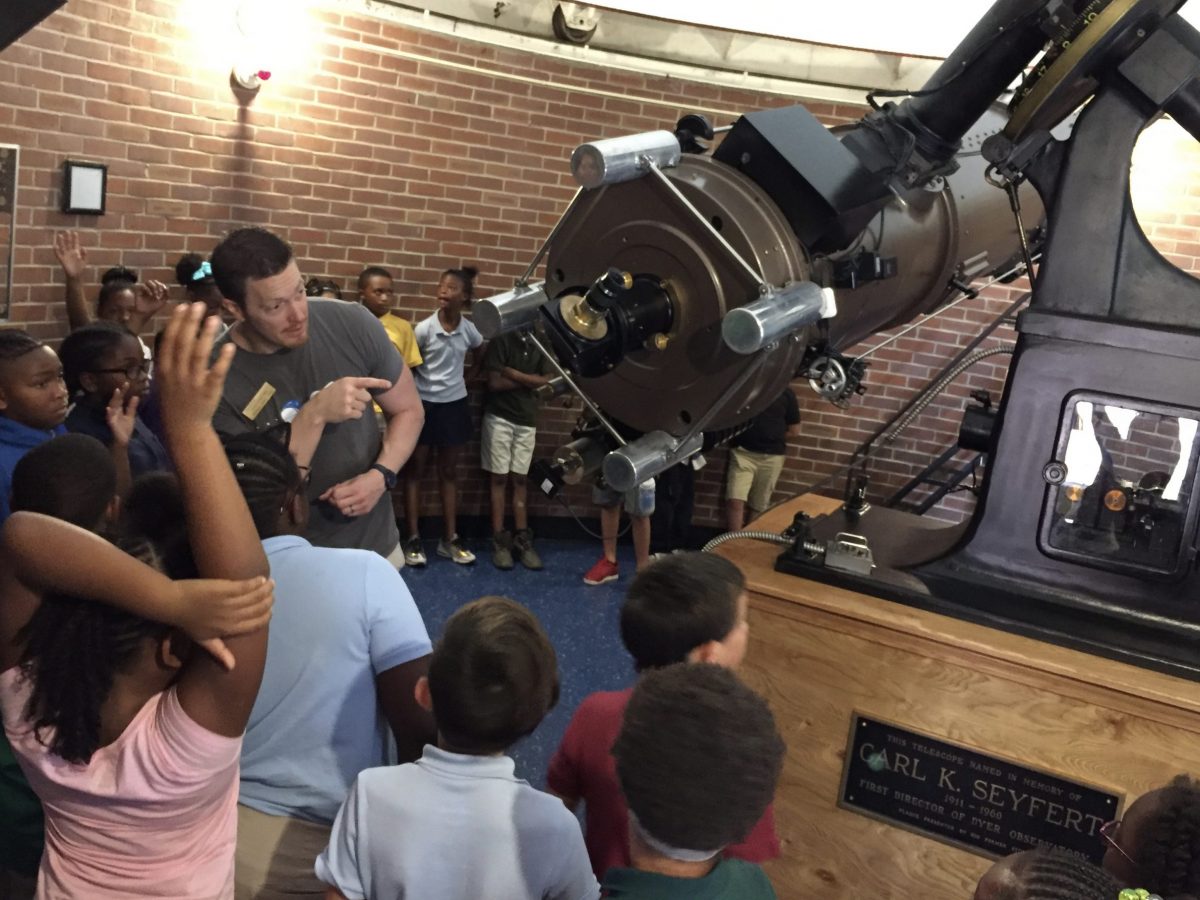Inspiring Interest in Science & Engineering
The latest math and science report card shows that students in the United States are still well behind their counterparts in many Asian and European nations. Our goal is to turn these standings around by helping to inspire student interest in science and astronomy, and Vanderbilt Dyer Observatory is a great way for teachers to supplement their Science, Technology, Engineering, Math, and astronomy curriculum.
Tailored Curriculum
We can tailor a program which enhances the science/astronomy curriculum in a number of ways. Students can listen to an astronomy expert talk about various subjects followed by a question and answer session; they can tour the observatory’s dome and main telescope, participate in viewing the Sun with the solar telescope, weather-permitting, and more.
Field Trip FAQs
Available Activities
MNPS Field Trip Agendas
The Fisk-Vanderbilt Planetarium Roadshow
Not able to bring your class to Dyer? No problem. Contact our friends in the Astrophysics Department on the main Vanderbilt campus for an inflatable planetarium visit that will bring the night sky to you!
